WALL
Photographs © Brian Rose
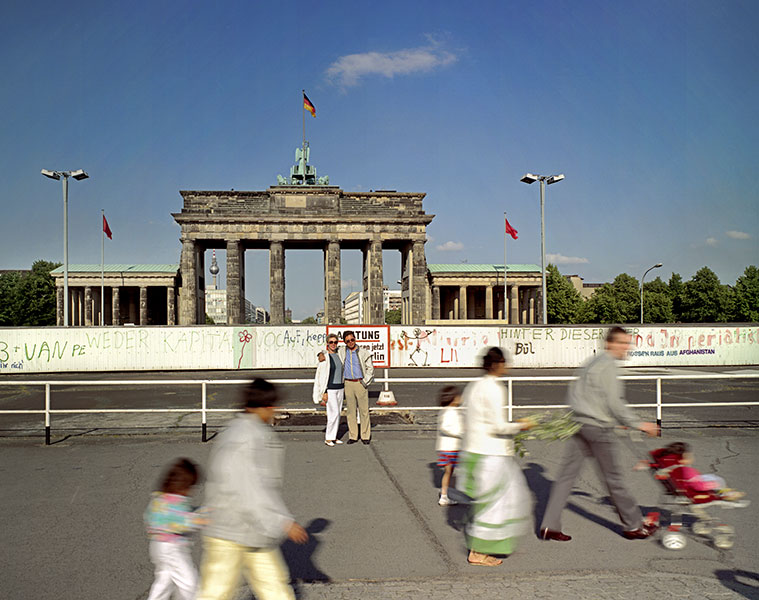 |
| The Brandenburg Gate, Berlin, 1985 |
| At
the Brandenburg Gate I took a series of photographs of tourists posing
before this symbol of Berlin. It could be a tourist sight in any city.
Many sightseers are transported around on large windowed buses with
guides pointing and speaking into a microphone. At Potsdamer Platz
they all get out, take pictures, buy souvenirs, and get back on the
bus. Many Berliners use the path alongside The Wall to get from place to place—often on bicycles—to avoid the streets. The Wall, while standing within East German territory, is easily walked up to, and graffiti—from the trite to the wonderful—is found everywhere, but most abundantly in Kreuzberg, a scruffy neighborhood of artists and immigrants. |
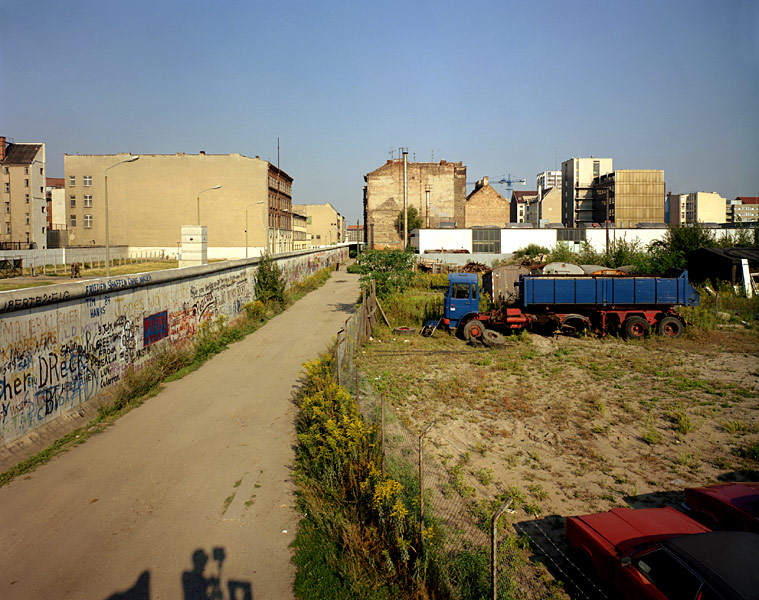 |
|
Niederkirchnerstrasse, Berlin, 1985 |
| Berlin
exerts a pull on me, as I’m sure it does on many people. It
is a hard thing to articulate. The city is not in any normal sense
attractive, but it has presence visually. The remaining pre-war
buildings—often battered and scarred--the vacant lots, the
blocks of new apartments and office buildings, all can be read visually
as history and urban archaeology. You can’t forget the war
and subsequent events here. There used to be several great train terminals around Berlin Mitte, and though the buildings were mostly destroyed (bombed or later torn down), the S-Bahn trains often follow the old tracks through the locations of the abandoned stations—and on the S-Bahn one can almost imagine Berlin before the war. |
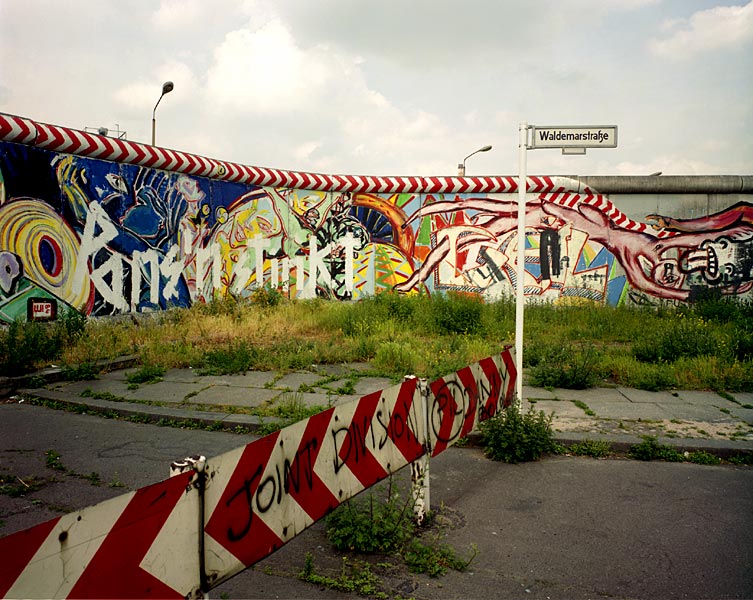 |
|
Waldemastrasse, Berlin, 1985 |
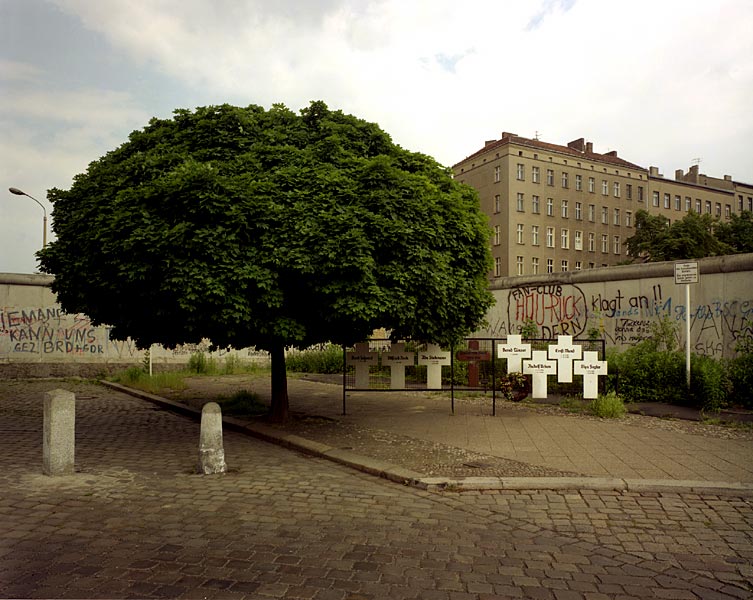 |
|
Bernauer Strasse , Berlin, 1985 |
| I walked on further to a cul-de-sac formed by a turn in the wall. Here was a large steel tower on the west side for viewing. A tourist bus pulled up and disgorged itself. A group of white crosses under a low but very full tree stood next to the viewing platform. I climbed up, the binoculars swiveled my way, and below was a particularly narrow corridor between the walls. From the tower one sees easily the street life of East Berlin, the passersby looking ahead, or occasionally glancing our way, and the street cars negotiating a turn-around dictated by the wall, which interrupts the former through traffic of Bernauer Strasse. |
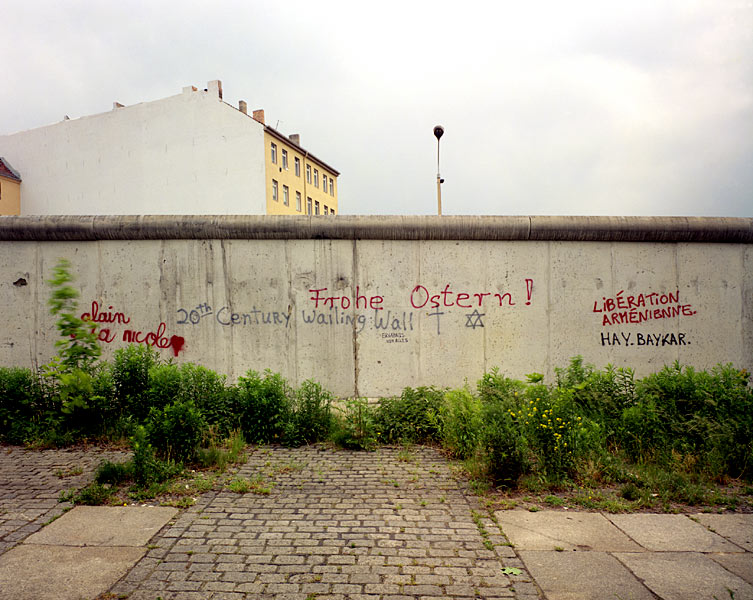 |
|
Bernauer Strasse, Berlin, 1985 |
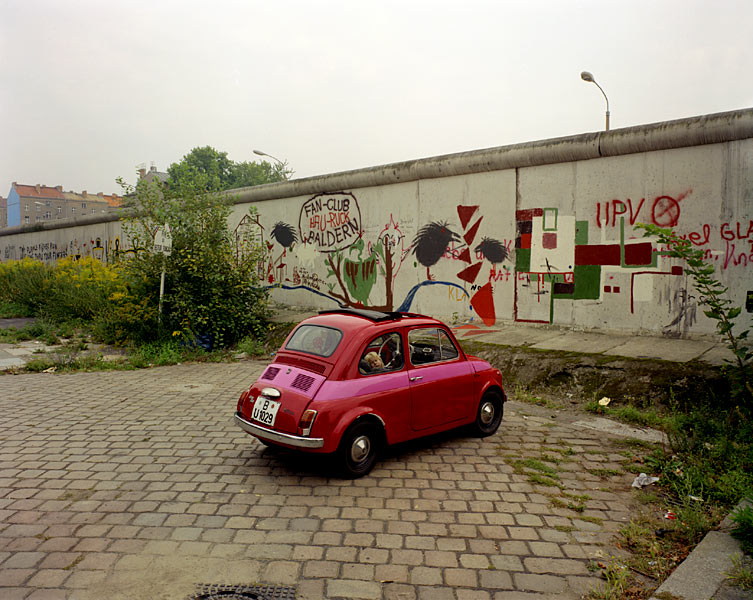 |
|
Bernauer Strasse , Berlin, 1985 |
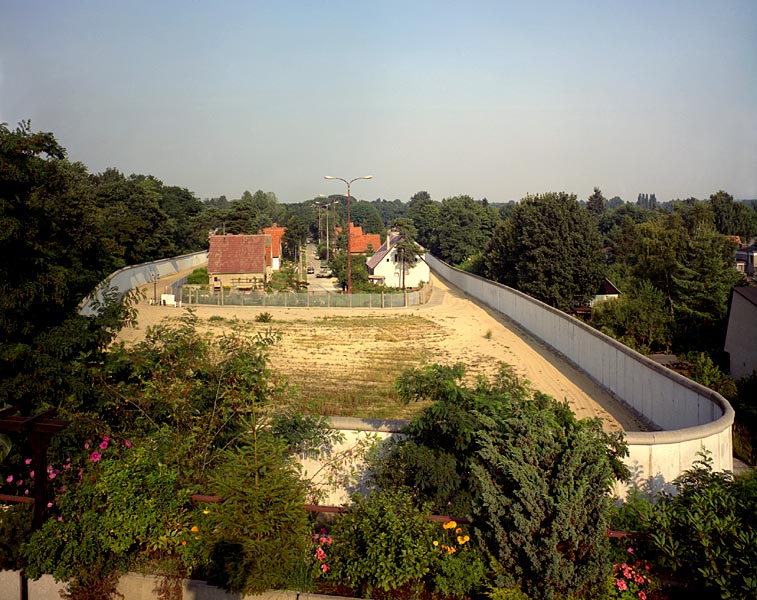 |
|
Am Zandkrug , Berlin, 1985 |
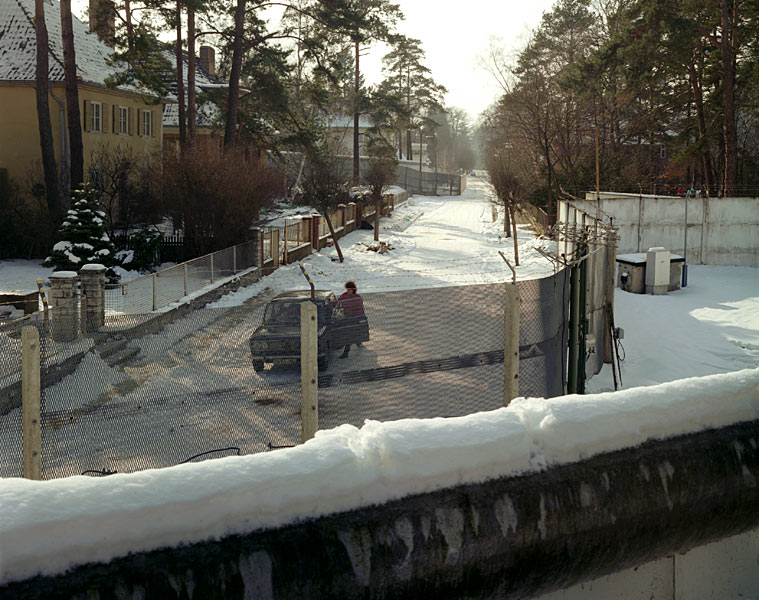 |
|
Stubenrauchstrasse, Berlin, 1987 |
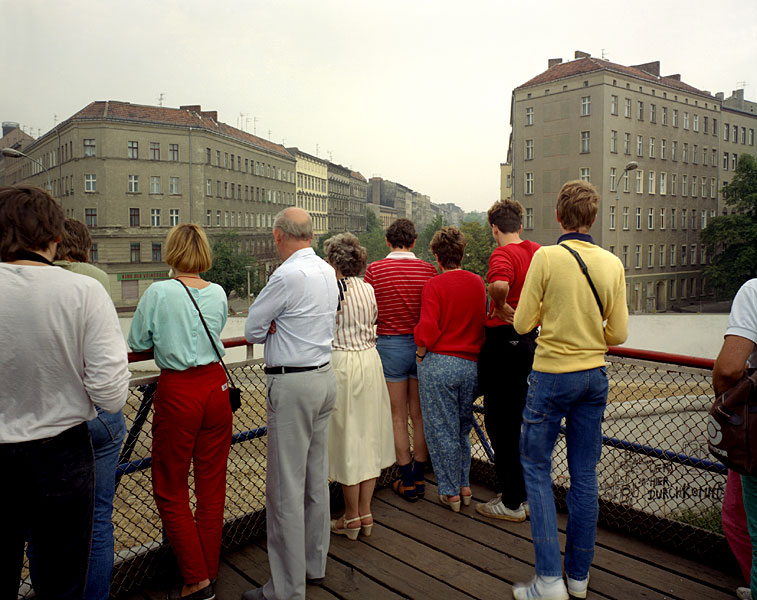 |
|
Bernauer Strasse , Berlin, 1985 |
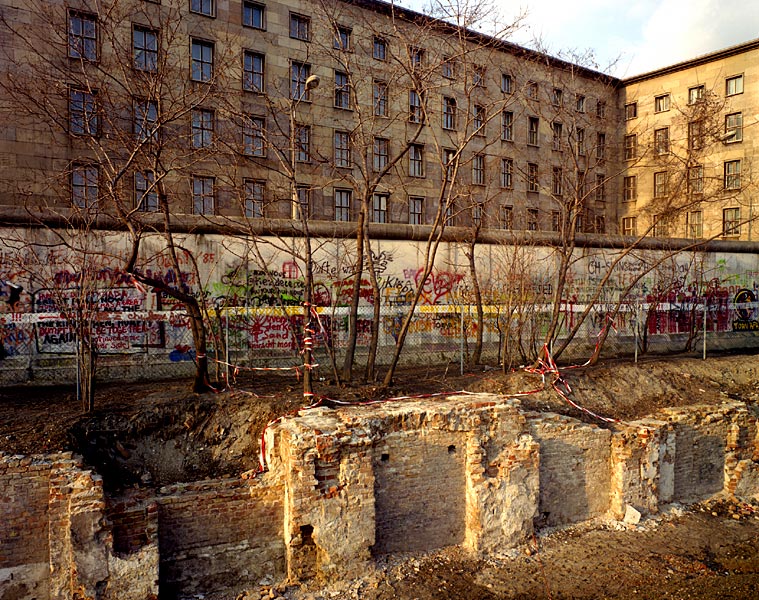 |
|
Niederkirchnerstrasse, Berlin, 1987 Former Luftwaffe heaquarters (background) SS/Gestapo foundations (foreground) |
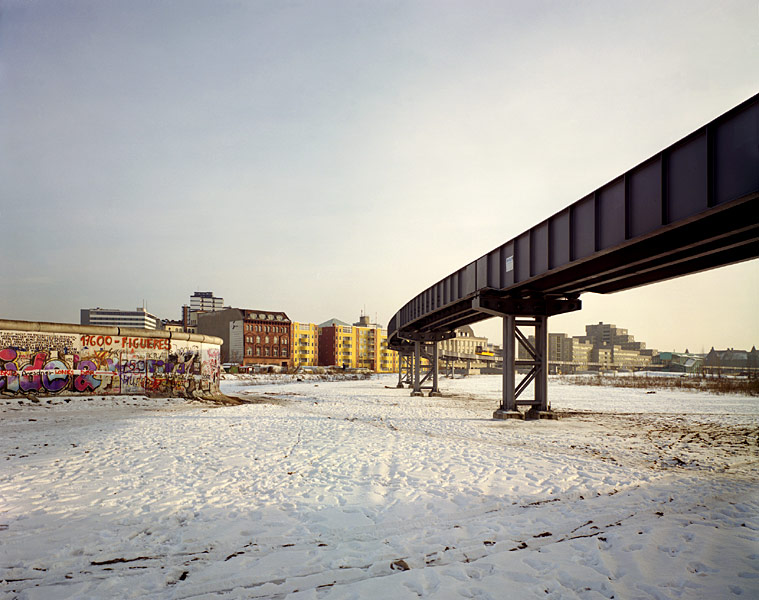 |
|
Potsdamer Platz, Berlin, 1987 |
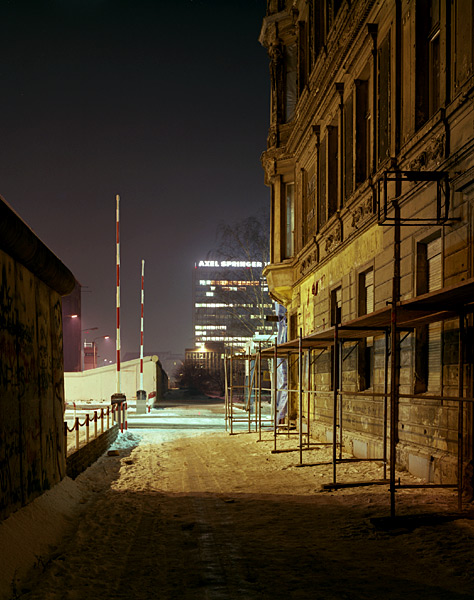 |
|
Checkpoint Charlie, Berlin, 1987 |
| On
Monday I took a break from walking The Wall and crossed over to
East Berlin with my friend Anamarie. Indulging a passion for early
modernist architecture we went looking for a couple of late 20s
buildings listed in our architectural guide book The area of the
city we went to is called Lichtenberg. It’s a gritty and depressing
place. One building we went to see was partially burnt out and partially
used, but no one seemed to be around. We then went looking for another project, but were stymied by a huge compound of buildings with guards and video cameras in the area where the housing project was supposed to be. I was unnerved by the situation and told Anamarie I wanted to get out of there. Guards in the distance started pointing at us, and we quickly retreated down the stairs of an U-Bahn station and stepped onto an arriving train. We later found out that the compound was the headquarters of the GDR secret police—the Stasi—or Staatssicherheitsdienst. The CIA, FBI and secret service rolled into one. Not a place to be walking around, particularly carrying a camera. |
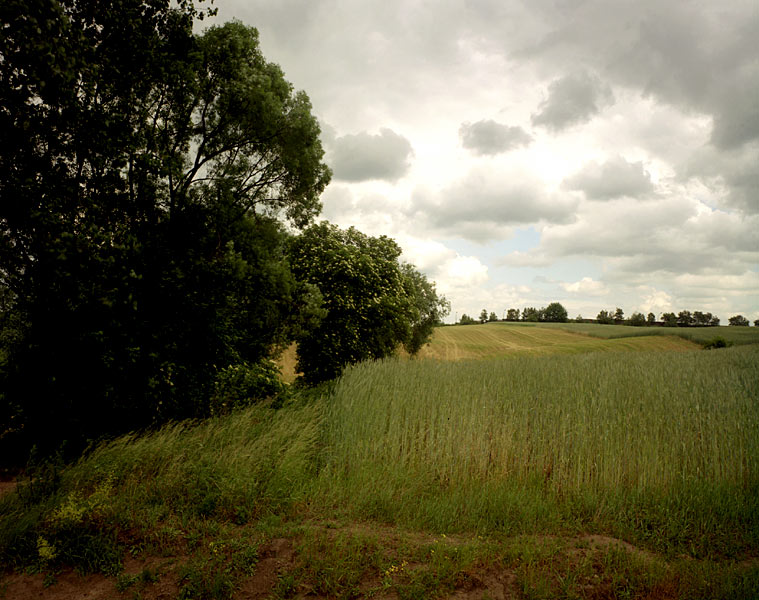 |
|
Lübars, Berlin, 1985 The wall runs along the horizon. |
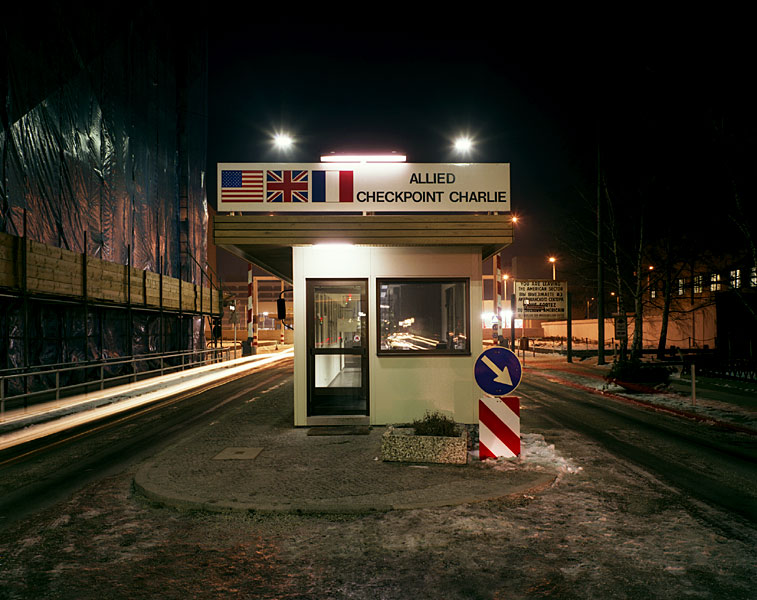 |
Checkpoint Charlie , Berlin, 1987 . |